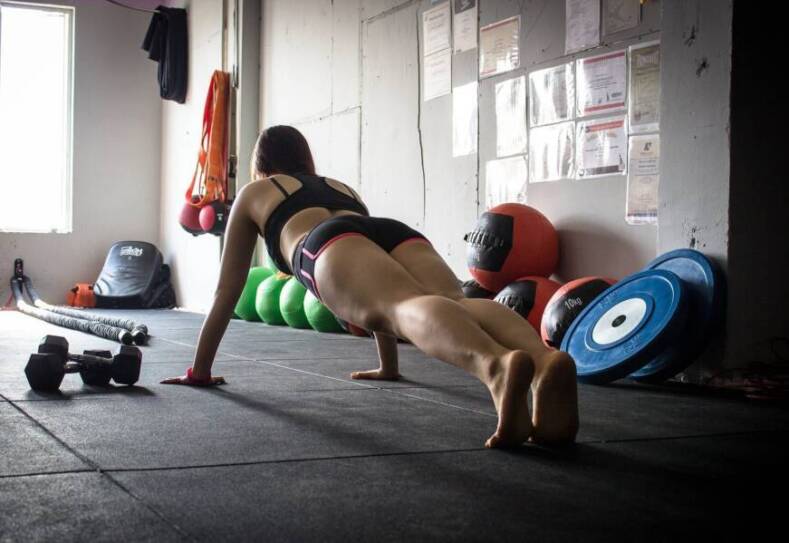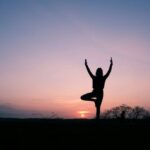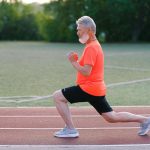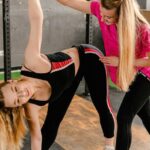Balance stretches are integral to maintaining and improving stability, an aspect of health that benefits individuals of all ages. Developing good balance is particularly crucial for older adults as it directly correlates with their ability to move confidently and reduces the risk of falls, potentially sustaining their independence. Regularly engaging in balance exercises not only supports day-to-day functions but also plays a role in the overall enhancement of posture and bodily coordination.
When integrated with regular physical activity and strength training, balance exercises form a comprehensive fitness regimen. They contribute to a well-rounded approach that targets muscle strength, flexibility, and reflex sharpness. These stretches can range from simple static poses that require holding a specific position to more dynamic movements that challenge the body to maintain stability while in motion.
It is essential to perform balance stretches with proper technique to gain the maximum benefits and minimize the risk of injury. Individuals may use support like a chair or wall initially and gradually progress to unassisted exercises as their confidence and capabilities increase. This progression helps to ensure continuous improvement and adaptation of the body to balance challenges, effectively bolstering one’s overall stability and health.
Fundamentals of Balance
Maintaining balance is critical for daily activities and physical performance. This section explores the essence of balance and the physical components that contribute to stability and coordination.
Understanding Balance and Stability
Balance is the body’s ability to maintain its center of gravity over its base of support. It is essential for movement and is particularly important when engaging in exercise or physical activities that require quick changes in direction or position. Stability, on the other hand, refers to the body’s ability to return to a position of equilibrium after being disturbed, which is vital for preventing falls.
The Role of Core Muscles
Core muscles are central to balance and stability. These muscles include the abdominals, hips, back, and pelvis, and they work together to support the spine and maintain posture. A strong core provides a sturdy base from which the limbs can move freely and efficiently, enhancing coordination.
Balance and Coordination Basics
Coordination is the harmonious functioning of muscles to produce complex movements with smoothness and precision. Basic balance exercises that improve coordination can start with weight shifts and progress to single-leg stances or dynamic movements. Consistent practice of these exercises can lead to improved performance in daily activities and sports, while also reducing the risk of injuries.
Balance Exercises for Strength Training
Incorporating balance exercises into one’s strength training regimen is essential for developing core stability and enhancing overall muscular coordination. These exercises are not only beneficial for athletes but also for individuals looking to improve functional fitness.
Plank Variations
Plank Variations are fundamental exercises that target the core, an essential component for balance and stability.
- Standard Plank: One holds a push-up position, with the body’s weight borne on forearms, elbows, and toes.
- Side Plank: This involves balancing on one arm and the side of one’s foot to engage the oblique muscles.
Variations such as the leg lift plank increase difficulty and further engage the core and legs.
Lower Body Strength and Balance
Lower Body Strength is achieved through exercises that simultaneously tax one’s balance mechanisms and strengthen muscles.
- Single-Leg Deadlift:
- Stand on one leg.
- Simultaneously bend at the hip, extending the free leg behind for balance, and reach down to the ground.
- Engage the hamstrings of the standing leg, then return to upright position.
This exercise improves hamstring strength while challenging balance. Incorporating these balance exercises into a strength training program can contribute significantly to overall performance and stability.
Improving Flexibility and Mobility
Effective balance is a symphony of both flexibility and mobility, and enhancing these aspects can significantly improve one’s stability. Specific stretches and yoga poses offer targeted benefits to key muscle groups that contribute to balance.
Stretching for Better Balance
Hip Flexors Stretch
One can target their hip flexors—critical for maintaining balance—through a focused stretching routine. A beneficial stretch for this muscle group involves:
- Standing with feet hip-width apart.
- Stepping back with one foot into a lunge, keeping the back heel off the ground.
- Ensuring the front knee is aligned over the ankle.
- Lifting arms overhead, gently pushing the hips forward, and holding the stretch for 15–30 seconds.
Balance on One Leg Stretch
Improving balance can sometimes be as straightforward as practicing it. Here’s how:
- Stand on the left leg with the right leg lifted.
- Use a chair or wall if support is needed.
- Stretch the lifted leg forward, keeping the spine straight.
Yoga Poses for Flexibility
Cat-Cow Pose
The cat-cow pose enhances spinal mobility:
- Start in a tabletop position, wrists under shoulders and knees under hips.
- Inhale, arch the back (cow), lifting head and tailbone.
- Exhale, round the back (cat), tucking chin to chest and tailbone under.
Downward-Facing Dog
Downward-facing dog pose is a staple in yoga for overall flexibility:
- From tabletop, press hands firmly to the ground.
- Tuck toes, lift hips, and straighten the legs.
- Ensure the body forms an inverted “V” shape, hold for several breaths.
Preventing Falls and Injuries
In the context of older adults, falls can lead to significant injuries, but incorporating balance training and specialized exercise programs into their routine can mitigate these risks. Exercise regimens designed by physical therapists play a crucial role in fall prevention.
Balance Training for Older Adults
Balance training exercises are essential for older adults to maintain stability and prevent falls. These exercises include activities like:
- Heel-to-Toe Walk: They perform this by placing the heel of one foot directly in front of the toes of the other foot, walking in a straight line to enhance balance.
- Single-Leg Stands: They practice standing on one leg for a set period, switching to the other leg, to improve overall balance.
Physical therapists recommend that older adults perform these exercises regularly, ensuring exercises match their capability levels to maximize benefits without overexertion.
Exercise Design by Physical Therapists
A physical therapist tailors exercise programs specifically for fall prevention by considering an older adult’s:
- Physical Strength
- Balance Capabilities
- Overall Health Condition
They may incorporate exercises such as:
- Calf Stretches: They instruct on performing these either standing or sitting, to improve lower leg strength.
- Shoulder Rolls: Older adults are guided through rotating their shoulders to improve upper body flexibility.
It’s crucial that these practitioners provide clear instructions and monitor progress, adjusting exercises as needed to align with the individual’s evolving needs.
Balance Techniques for Fitness Enthusiasts
Incorporating balance exercises into a fitness routine enhances stability, performance, and proprioceptive awareness. Fitness enthusiasts can benefit from understanding the distinctions between dynamic and static balance exercises, as well as developing proprioception for improved body awareness during workouts.
Dynamic and Static Balance in Workout
Dynamic balance is crucial for movements where the body is in motion. Such balance is fostered through exercises that simulate real-world activities, requiring the individual to maintain stability while transitioning between movements. For instance, a single-leg deadlift incorporates dynamic balance by having the individual hinge at the waist while reaching toward the floor, then returning upright.
- Dynamic balance exercises:
- Single-leg deadlift
- Lunges with torso twists
- Bosu ball step-ups
Static balance, in contrast, involves maintaining a position while minimizing movement. This type of balance is exemplified in exercises where individuals hold a pose for a duration, strengthening muscles and stabilizers that are vital for posture and daily activities.
- Static balance exercises:
- Standing tree pose
- Single-leg stance holding a medicine ball
- Plank variations on unstable surfaces
Proprioception and Body Awareness
Proprioception refers to the body’s ability to perceive its own position in space, enhancing coordination and balance. Exercises that challenge proprioception provide feedback to the brain about the position of muscles and joints, subsequently improving the body’s natural balance responses. For example, performing exercises on a Bosu ball or balance pad requires the individual to constantly adjust their muscle activity to stay upright, thereby increasing proprioceptive acuity.
- Exercises to improve proprioception:
- Balance on a wobble board or balance pad
- Closed-eye standing exercises
- Stability ball exercises
Developing proprioception is integral for fitness enthusiasts who seek to execute their workouts with greater proficiency and safety. Whether through dynamic movements or static holds, incorporating proprioceptive training can lead to substantial improvements in overall fitness performance.
Equipment and Accessories to Enhance Balance
Incorporating specific equipment and accessories into one’s balance training routine can greatly improve stability and coordination. This section explores the tools designed to challenge and enhance users’ balance through innovative tech and design.
Balance-Enhancing Gear
Balance Boards: Balance boards come in various forms—from wobble boards to roller boards with a cylindrical roller underneath. They offer dynamic instability, forcing users to adapt their posture to maintain balance. The Indo Board, a popular type of roller board, is notable for simulating the balance required in surfing, providing a challenging workout that targets core stabilizing muscles.
Exercise Balls: Also known as stability balls, these large, air-filled spheres are a staple for balance and core training. The Trideer Wobble Cushion, a variant of the exercise ball, behaves like a balance disc that can support a weight capacity of up to 450 pounds. It is versatile for both sitting and standing exercises, making it a suitable tool for all fitness levels.
Training on Unstable Surfaces
BOSU Balls: The BOSU ball has a flat platform on one side and a flexible dome on the other, allowing for training on both stable and unstable surfaces. This device enhances core strength and balance as users perform exercises on its dynamic surface.
Unstable Surfaces for Core Stimulation: Using unstable surfaces like wobble cushions or balance pads as part of a workout entails that the body must constantly adjust to the shifts in balance. This not only hones balance skills but also strengthens the somatosensory system.
Specific Balance Routines
Incorporating specific balance routines such as Tai Chi and functional balance exercises can significantly improve stability and coordination. These practices engage various muscle groups and sensory systems necessary for maintaining balance.
Tai Chi for Stability
Tai Chi is a form of martial arts that emphasizes slow, deliberate movements and deep breathing. These exercises not only enhance balance and stability but also contribute to overall physical and mental well-being.
- Key Movements:
- Weight shifts: transferring weight from one leg to another in a controlled manner.
- Controlled arm movements: extending arms and maintaining postural control.
- Benefits:
- Improved muscular strength and endurance.
- Enhanced proprioception, the body’s ability to perceive its position in space.
Functional Balance Routines
Functional balance exercises replicate everyday movement patterns to strengthen the muscles used daily, making them particularly beneficial for preventing falls and improving coordination.
- Exercises:ExerciseDescriptionHeel-toe walkInvolves walking in a straight line, placing the heel of one foot directly in front of the other toe.Tightrope walkSimulates walking along a tightrope to challenge balance and engage the core.Flamingo standRequires standing on one leg while holding the opposite foot, much like a flamingo.
- Movement Patterns:
- Emphasis on unilateral balance: training one side of the body at a time to improve overall balance.
- Dynamic balance: incorporates moving through different planes of motion to simulate real-world activities.
Through these specific routines, individuals can develop better balance, which is pivotal for daily activities and reducing the risk of falls.








